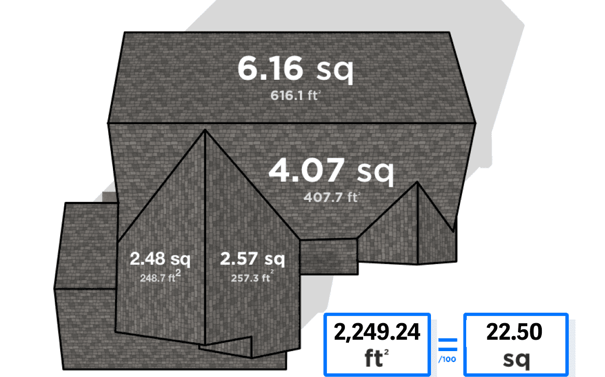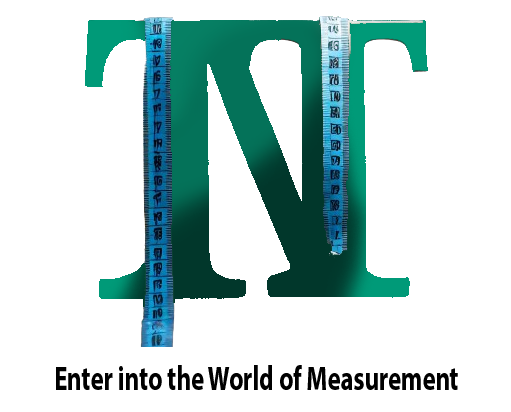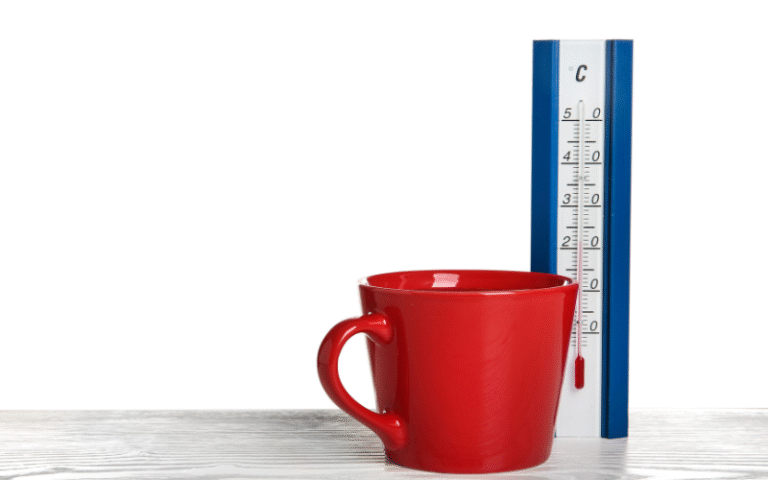How to Measure a Roof for Shingles: Expert Tips
To measure a roof for shingles, measure the length and width of each section of the roof and multiply them together to get the square footage. Then add up the square footage of all sections to get the total square footage of the roof.
When planning to install new shingles on your roof, measuring the roof accurately is important to ensure you purchase the correct amount of shingles and avoid any unnecessary expenses. The process of measuring a roof for shingles involves determining the square footage of the entire roof.
This can be done by measuring the length and width of each section of the roof, multiplying them together to get the square footage of each section, and then adding up the square footage of all sections to get the total square footage of the roof. We will guide you through the process of measuring your roof for shingles, step by step.
Introduction To Roof Measuring
When it comes to installing new shingles on your roof, accurate measurements are essential for a successful project. In this guide, we’ll cover the importance of precise measurements, safety precautions to take before starting, and the step-by-step process of measuring a roof for shingles.
Importance Of Accurate Measurements
Accurate measurements are crucial for ensuring you purchase the right amount of shingles and other materials. Incorrect measurements can lead to costly overages or shortages, causing delays and additional expenses.
Safety Precautions Before Starting
Before climbing onto your roof, it’s vital to take safety precautions to prevent accidents and injuries. This includes using proper safety equipment such as harnesses and ladders, as well as ensuring the roof is clear of debris and in good condition.
Tools And Materials Needed
To measure a roof for shingles, you will need a tape measure, ladder, safety gear, and a calculator. These tools are essential for accurately determining the roof area and calculating the amount of shingles required for the project.
To accurately measure a roof for shingles, you’ll need a few essential tools and materials. These items will make the task easier and ensure precise measurements. Here are the key elements you should have:Measuring Tape And Other Essentials
The most crucial tool for measuring a roof is a reliable measuring tape. Make sure to choose a tape that is at least 25 feet long, as this will allow you to measure longer distances without the need for frequent repositioning. A measuring tape with clear markings and a locking mechanism will help you achieve accurate measurements with ease. In addition to a measuring tape, you’ll also need a ladder to access the roof safely. Choosing the right ladder is essential for your safety and convenience. Opt for a ladder that is sturdy, well-maintained, and the appropriate height for reaching your roof. Ensure that it is set up on stable ground and that it adheres to safety guidelines. Other essentials you should have on hand include a notepad or a smartphone with a note-taking app to record your measurements, a pencil or pen for jotting down the numbers, and a calculator to help you calculate the square footage of your roof accurately. Here’s a breakdown of the tools and materials needed:| Tools | Materials |
|---|---|
| Measuring tape | Ladder |
| Notepad or smartphone | Pencil or pen |
| Calculator | – |
Understanding Roof Types
To measure a roof for shingles, start by calculating the square footage of the roof’s surface area. Next, determine the pitch of the roof to account for the additional materials needed. Finally, add a waste factor to ensure you have enough shingles to complete the job.
With these steps, you can accurately measure your roof for shingles and complete your roofing project with confidence.
Gable And Hip Roof Basics
A gable roof has two sloping sides, creating a triangular shape. The hip roof slopes on all four sides, meeting at the top.Special Considerations For Unusual Roof Shapes
Unusual roof shapes like mansard or gambrel roofs may require specialized shingle measurement techniques. Mansard roofs have a double slope on all sides. Gambrel roofs have steep upper slopes and flatter lower slopes. Dome roofs are round and require precise measurements. Consider the complexity of the roof shape when measuring for shingles. Accurate measurements are crucial for a successful shingle installation.
Credit: www.wikihow.com
Preliminary Steps
To measure a roof for shingles, there are preliminary steps that need to be taken. These include calculating the roof’s square footage, identifying the roof pitch, and determining the number of shingles needed based on the type of shingle selected.
Accurate measurements are crucial for a successful roofing project.
Cleaning The Roof Surface
Before you can accurately measure your roof for shingles, it’s important to start with a clean surface. Cleaning the roof surface will remove any debris, dirt, or moss that could interfere with your measurements or the installation process. Begin by removing any loose leaves, branches, or other debris from the roof. You can use a broom or a leaf blower to gently clear away these items.
Next, if you notice any areas of moss or algae growth, it’s important to address them before proceeding with the measurement. Moss and algae can affect the integrity of the shingles and can cause damage over time. You can use a roof cleaner or a mixture of water and bleach to remove the moss or algae. Apply the cleaner or mixture to the affected areas and scrub gently with a brush. Rinse thoroughly with water to remove any residue.
Identifying The Starting Point
Once the roof surface is clean, it’s time to identify the starting point for your measurements. This will help ensure accuracy and consistency throughout the process. The starting point is typically the bottom edge of the roof, where the shingles will be installed first.
To find the starting point, locate the eave or the lowest edge of the roof. This is usually where the roof overhangs the exterior walls of the house. Start your measurements from this point and work your way up the roof.
It’s also important to consider the direction of the roof slope when identifying the starting point. If your roof has multiple slopes or different angles, you may need to measure each section separately. Make sure to label each section accordingly to avoid confusion during the installation process.
By following these preliminary steps of cleaning the roof surface and identifying the starting point, you can ensure accurate measurements for your shingles. This will help you determine the quantity of shingles needed and make the installation process smoother and more efficient.
Calculating Roof Area
Measuring your roof area for shingles is a crucial step in planning a roofing project. By following these simple steps, you can accurately calculate the roof area without any hassle. Ensure a smooth installation process by starting with precise measurements.
Calculating Roof Area: Before you can install new shingles, you need to calculate the area of your roof accurately. By doing so, you can purchase the right amount of shingles without underestimating or overestimating. In this guide, we will show you how to calculate the roof area by breaking down the roof into shapes and applying measurement formulas. Breaking Down the Roof into Shapes: The first step to calculate the roof area is to break down the roof into simple shapes such as rectangles, triangles, and trapezoids. This will make it easier for you to measure and calculate the area of each shape. Here are the steps to follow: 1. Start by measuring the length and width of each rectangular section of the roof. 2. Measure the base and height of each triangular section of the roof. 3. For trapezoidal sections, measure the length of both bases and the height. 4. Record the measurements for each section on a piece of paper or a spreadsheet. Applying the Measurement Formulas: Once you have measured and recorded the dimensions of each section of the roof, you can now apply the measurement formulas to calculate the area of each shape. Here are the formulas to use: 1. To calculate the area of a rectangle, multiply its length by its width. 2. To calculate the area of a triangle, multiply its base by its height and divide by 2. 3. To calculate the area of a trapezoid, add the length of the two bases, multiply by the height, and divide by 2. 4. Add up the areas of all the shapes to get the total roof area. Here is an example of how to calculate the roof area using the formulas: 1. Rectangular section: Length = 30 feet, Width = 20 feet. Area = 30 x 20 = 600 square feet. 2. Triangular section: Base = 20 feet, Height = 15 feet. Area = (20 x 15) / 2 = 150 square feet. 3. Trapezoidal section: Length of base 1 = 25 feet, Length of base 2 = 15 feet, Height = 10 feet. Area = ((25 + 15) x 10) / 2 = 200 square feet. 4. Total roof area = 600 + 150 + 200 = 950 square feet. In conclusion, calculating the roof area is an essential step in determining the number of shingles needed to complete a roofing project. By breaking down the roof into shapes and applying measurement formulas, you can easily calculate the area of each section of the roof and get an accurate estimate of the total roof area.
Credit: hover.to
Accounting For Roof Features
When measuring a roof for shingles, it’s essential to account for various roof features to ensure accurate calculations and efficient installation. Whether dealing with dormers, skylights, or the roof slope, each feature requires careful consideration to avoid wastage and unnecessary costs.
Dealing With Dormers And Skylights
Dormers and skylights are common roof features that can present challenges when measuring for shingles. Properly measuring these areas will prevent excess material waste and streamline the installation process. It’s important to take precise measurements of these features and factor in their unique shapes and angles when calculating the required shingle quantity.
Incorporating The Roof Slope
The roof slope is a crucial factor in determining the amount of shingles needed for the project. Accurately assessing the slope will ensure that the right amount of material is ordered, avoiding shortages or overages. Using specialized tools and techniques, such as a pitch gauge, is essential for obtaining precise measurements and factoring in the slope when estimating shingle quantities.
Estimating Shingle Quantity
To estimate shingle quantity for a roof, measure the length and width of each roof plane. Multiply these dimensions to get the square footage. Divide by 100 to determine how many “squares” of shingles are needed, with one square equaling 100 square feet.
Understanding Shingle Coverage
To estimate shingle quantity, start by understanding coverage per bundle.Factors Affecting Shingle Usage
Multiple factors influence shingle usage, including roof pitch and waste. Estimating Shingle Quantity: When measuring a roof for shingles, calculating the quantity needed is crucial. Factors such as roof size, pitch, and waste impact the amount of shingles required. To estimate shingle quantity accurately, consider the type and size of the shingles. Calculate the total square footage of the roof surface to determine the number of shingles. Utilize a roofing calculator or consult a professional for precise measurements. Always include a buffer for extra shingles due to cut-offs and waste. By understanding shingle coverage and the factors affecting usage, you can ensure a successful roofing project.Tips For Accuracy And Efficiency
When measuring a roof for shingles, accuracy is crucial for a successful project. To ensure precise measurements, follow these tips:
Double-checking Measurements
- Measure twice to verify accuracy
- Check measurements from different angles
- Avoid rushing through the measuring process
Using Roofing Software
- Utilize specialized roofing software tools
- Input measurements for precise calculations
- Leverage technology for efficiency
Final Considerations
When measuring a roof for shingles, there are a few final considerations to keep in mind to ensure a smooth and successful roofing project.
Ordering Extra Materials
- Order extra shingles to account for any mistakes.
- Consider getting additional underlayment and flashing.
Waste Management And Recycling
- Plan for proper disposal of old shingles and waste.
- Check for local recycling options for old roofing materials.

Credit: roofingcalculator.com
Frequently Asked Questions
How Do You Calculate Shingles For A Roof?
To calculate shingles for a roof, measure the length and width of each roof section in square feet. Divide the total area by the shingle’s coverage per bundle. Add extra for waste and cut-offs. For accurate calculations, consult a roofing professional or use an online shingle calculator.
How Do You Measure The Size Of A Roof?
To measure the size of a roof, calculate the area by multiplying the length and width. For complex shapes, break it into smaller sections and add them together. Use a measuring tape or laser measure for accuracy.
How Many Shingles Do I Need For A 2000 Square Foot Roof?
For a 2000 square foot roof, you’ll need around 60 bundles of shingles. It’s important to account for waste and overlap when calculating the quantity needed.
How Do You Figure Out How Many Square You Need For A Roof?
To figure out the number of squares needed for a roof, measure the length and width of each section. Multiply these measurements together to get the area in square feet. Divide by 100 to convert to squares. Add up the squares for all sections to determine the total needed.
Conclusion
To conclude, accurately measuring a roof for shingles is crucial to ensure a successful installation. By following the steps outlined in this blog post, you can confidently determine the measurements needed for your roofing project. Remember to take safety precautions and consult professionals if needed.
With this knowledge, you’ll be well-equipped to tackle any roofing project with precision and efficiency. Happy measuring!







